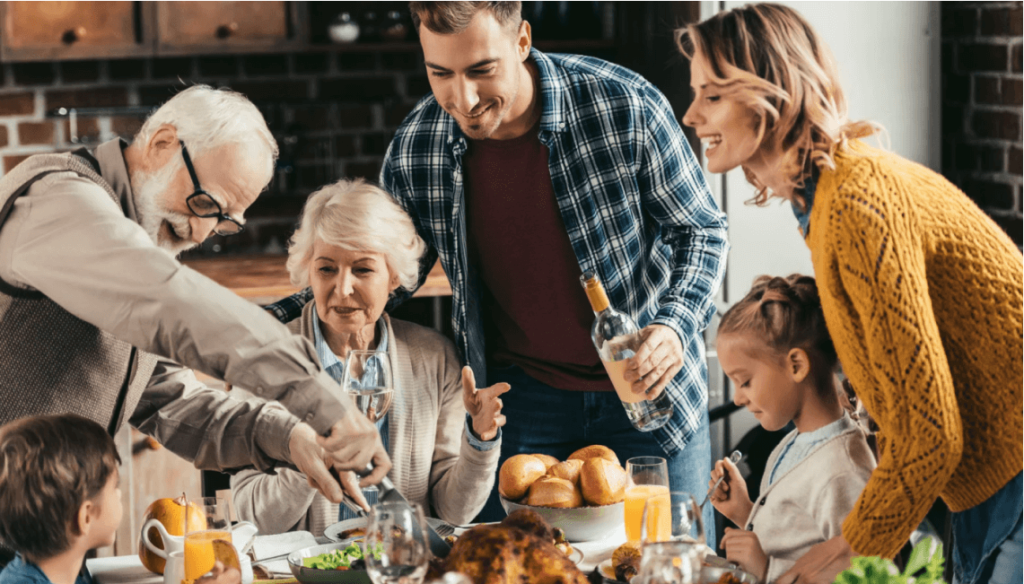A Compassionate Approach to Emotional Eating

For those of us who engage in emotional eating, it can seem to be a mysterious process and can be hard to take a compassionate approach to emotional eating. Why do we do it? What is the payoff? In practice, it is often quite straightforward. Consider the scenario below.
You have just had the worst day of your life. The car wouldn’t start, so you were late for work…again! One thing led to another all day until, by the time you arrived home, you would have done anything to make the pain and frustration go away. You rush to the refrigerator, tear open the door, and grab the first thing you see – yum, gourmet ice cream! You sink into the bliss of taste, pleasure, and oblivion, and your horrible day recedes into the distance. But when you eventually come up for air, you are full…ugh…too full. You are groggy, sated, and somewhat comforted. But now there is a new problem…the shame kicks in, and the self-judging voices follow close behind: “You blew it! You always blow it. Why can’t you control yourself? You’ll never get a grip. You’ll never lose weight. You’ll never succeed at anything.”
Why do we engage in emotional eating?
Emotional (sometimes called compulsive eating or bingeing) can happen in a variety of ways for a whole array of reasons. While some automatic or compulsive eating is in response to the taste of food (or “hedonic eating”), emotional eating is often a learned response to dealing with life’s frustrations and our own resulting uncomfortable feelings. It encompasses a range of eating behaviors from periodic emotional eating (such as downing a pint of Ben and Jerry’s following a relationship break-up) to clinically significant levels qualifying for a diagnosis of Binge Eating Disorder (BED). Emotional eating itself can be understood in various ways. We might call it binge-eating, compulsive eating, stress eating, eating addictively, etc. Whatever the label, emotional eating is almost always an attempt to take care of ourselves when nothing else we do seems to work. Emotional eating can influence not only our emotional health, but it also impacts our physical health. Some of us gain weight due to eating excessive amounts during binge episodes. Others practice what are called “compensatory behaviors” (ways to offset the food eaten so that we do not gain weight), such as purging, over-exercising, or taking laxatives.
How we learn to engage in emotional eating
Psychologists over the years have developed a term for the type of eating (or another learned behavior) that takes away emotional pain: negative reinforcement. You can think of this as doing something to “make it go away.” Negative reinforcement can apply to a range of behaviors and disorders, from binge eating to spending too much time on our smartphones to using alcohol in a disordered way. In each case, the process is relatively straightforward: we feel an emotion that we would rather not experience, and we discover that by doing something – in this case, eating – the discomfort goes away. Our brains are very efficient learners! It doesn’t take many “trials” of this kind of learning for our brains to figure out that eating is a fast track to ending or numbing emotional discomfort, thus the eating behavior is reinforced and becomes more frequent.
How can we take care of ourselves?
Given that ultimately, much emotional eating is done to feel better and soothe distressing emotions, how can we honor this need for self-care without harming ourselves? The first step is always curiosity. We can’t address a problematic pattern in our lives without first understanding the pattern. Therefore, we may find it useful to spend a week or two logging or journaling to track our patterns without attempting to make any changes. Although this can feel like a frustrating waste of time when we want to change now, the time and effort spent on this step will create the conditions for long-term success.
So, then, we explore:
- How are we “doing” the process of emotional eating? What type of self-talk might be maintaining the pattern? How do we talk to ourselves before we eat emotionally? During? After? The information we uncover will help us to understand the types of changes that would most help us practice eating from a place of self-understanding and wisdom. For example, we may discover that the way we describe an incident to ourselves creates a sense of fear or urgency, and eating serves to numb this feeling. We may find that our self-judgments during and after an episode of eating make us feel even more vulnerable, creating a vicious cycle of continuing to eat to get away from the new threat: our own self-judgmental thoughts. (Hint: Most of us find that our thoughts are rarely self-supportive during these episodes.)
- When do we tend to eat emotionally? Is it a certain time of the day? Are we vulnerable to certain environmental cues, like being home alone? Or do we binge in response to certain types of events or emotions?
The first step entails looking for patterns in our eating, with warmth and curiosity, without self-judgment, and with a sincere wish to understand the process.
How to take a compassionate approach to emotional eating
Armed with information about how and when we tend to “do the process” of emotional eating, we can begin to explore alternative strategies for taking care of ourselves. These strategies will ideally involve a combination of self-soothing techniques, learning to act in accord with our most cherished values, and developing self-kindness.
Self-soothing techniques
We may find that what we really need in the moment is to feel soothed, or to feel connected. In this case, we may choose from a variety of strategies.
- Engaging in friendly, soothing self-talk. We can learn to change our inner dialogue to reflect the supportive way we would talk to a friend. Just as we have learned to judge ourselves harshly, we can learn to approach ourselves with warmth, support, and friendliness. We may choose to write ourselves a self-compassionate letter expressing caring toward ourselves, perhaps imagining the letter is being written by someone who cares about us deeply or that we are writing to a good friend who is struggling in a similar way.
- Using our senses to feel soothed: We might soothe ourselves using calming music, soft fabrics, pleasant scents, etc. For instance, you might take time to really stop to enjoy that beautiful sunset. Or you could keep a selection of essential oils available. The scent of lavender, for instance, is known for its calming properties, but whatever scent evokes a happy or peaceful memory for you can be helpful. Keeping a cool, smooth stone in your pocket that you can touch to center yourself may be helpful as well. You get the idea!
- Social support: Do we need to feel seen and connected? Perhaps we can reach out to someone we trust to talk out our issues, or simply spend time doing something enjoyable with friends.
Discovering and honoring our values
Have you taken the time to really consider your most important values? A life that is aligned with our deepest-held values is a life that is more inherently satisfying. When we feel deeply satisfied by our lives and spend some time each day acting out of these values, we are less likely to reach out for something else – namely, food – to satisfy ourselves. For instance, if one of your strongest values is serving others but you work at a job that requires you to perform tasks that feel as if you are taking advantage of others’ goodwill in some way, you may experience a distressing disconnect between your values and actions, which could lead to eating to take care of your uncomfortable feelings. In this way, value identification can act as a two-way street. Your uncomfortable feelings, when you allow yourself to experience them, can lead you back to your values. In reassessing your values, you create space for possible needed changes in how you express yourself through work and how you spend your free time…which leads to a reduced need to eat emotionally.
The crucial need for self-kindness
Most important of all, it is crucial that we are kind to ourselves while working through these issues. Because emotional eating is often an attempt to relieve feelings that can feel threatening in the moment, increasing our internal sense of threat through self-criticism will not help! Given that, how can we speak to ourselves in a way that creates a sense of safety? By learning to be our own “compassionate coach,” we can create a feeling of safety to approach our challenges while gently encouraging ourselves to move forward and take some reasonable risks.
One way we can practice motivational self-kindness is to imagine how we would speak to someone we care about deeply. Would we motivate them through insults and name-calling? Or would we use soothing words, ask them what they are thinking and feeling, try to help them come to a wise decision, and support them in making gradual changes? A simple change from hostility to friendliness can not only support needed change but open our minds to a range of possibilities we had not previously considered as our minds come out of “threat mode” and can access the full range of our creative thinking.
Armed with the information we have gathered about how we “do” the process of emotional eating, our values, and a willingness to approach ourselves and our eating with kindness, we can begin to make changes in our attitude toward eating and begin to heal. There are many approaches available to support us in making changes in our relationship with food, including self-help books, groups, and individual therapy. If you need support in taking a more compassionate approach to emotional eating, speaking with a mental health professional can be a good first step to lasting change.
Ready to prioritize your mental health?
Great Lakes Psychology Group is here to help. With an extensive network of caring therapists available to meet online or in-person, we make it easy to find the right fit for your unique needs.




